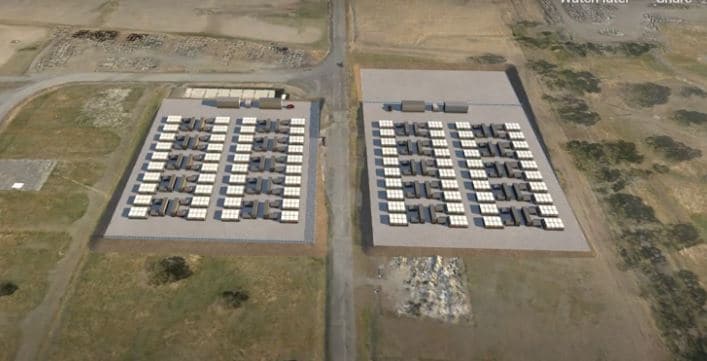Australia's Clean Energy Council (CEC) says in a newly published paper that large-scale battery energy storage has become the best way to spread energy generated by solar and wind throughout any day, and to instantly respond to peak energy needs in the National Electricity Market (NEM) for long and short durations.
The paper compares the levelized cost of energy delivered by a new 250 MW gas peaker plant with 250 MW four-hour and two-hour grid-scale batteries. It finds that overall – when various costs are calculated – that the batteries are 17% (two-hour) and 30% (four-hour) cheaper.
Improvements in battery-operating technology mean storage now outperforms gas-fired peaking plants on speed and reliability of response, which was the basis of gas technology’s biggest claim to a place in the future renewables-based electricity system.
Popular content
Where gas plants can respond within 15 minutes, says the CEC report, battery solutions can discharge as “demand (and correspondingly prices) approach peak levels” and sustain output “to cover the typical daily peak duration.”
“Batteries can ramp up quickly, have zero start-up time and provide a better frequency response,” said CEC Chief Executive Kane Thornton.
To continue reading, please visit our pv magazine Australia website.
This content is protected by copyright and may not be reused. If you want to cooperate with us and would like to reuse some of our content, please contact: editors@pv-magazine.com.



Very misleading claim. If you need stored power for eight hours the cost of is not competitive with thermal. If you need it for 48 hours the cost of battery storage is prohibitive. Gas plants will always be with us.
Your claim doesn’t make much sense since the price of stored energy does not increase by being stored longer. Or are you trying to refer to the unlikely situation where no electricity is produced for 48 straight hours?
The point is that — ignoring edge cases like the one you present — gas plants are losing their most lucrative market. This means they will increasingly be used to replace coal fired plants in low margin applications, or go broke.
Howard, one word: Nonsense! Calcium Hydride storage is also less expensive than gas peaking – and provides a good alternative for the outlier circumstance you’ve described. Where gas works is for distributed combined heat and power situations where the heat is given equal value. Small gas- and solar-powered, switching Stirling engines work very well in that circumstance as well, and with CAPEX coming down, should kill gas turbines in the near future. Goodbye coal – and goodbye gas. Alas, we need the captured CO2 – pulling it in expensively out of the atmosphere – or inhabited buildings is our next search path.
Sure. The problem is not technical or environmental protection but economic. A wind/solar/ storage grid will need a massive amount of gas backup for security against rare Dunkelflauten, as the Germans put it. But it will very rarely be used; the emissions are trivial. Texas has shown that the prospect of occasional days of astronomical spot prices does not induce enough investment in deep backup. The public sector has to step in, as with vaccine factories.